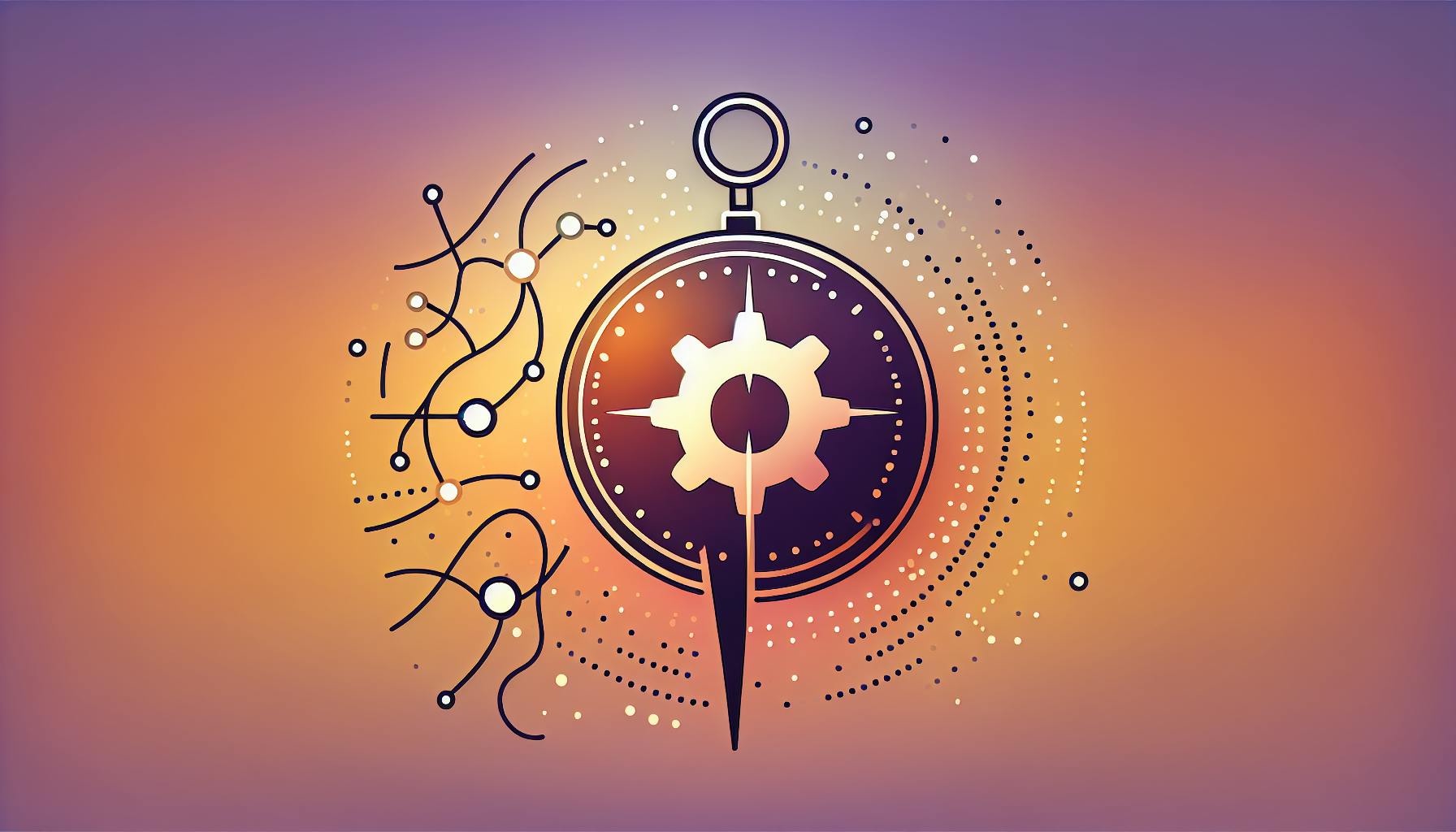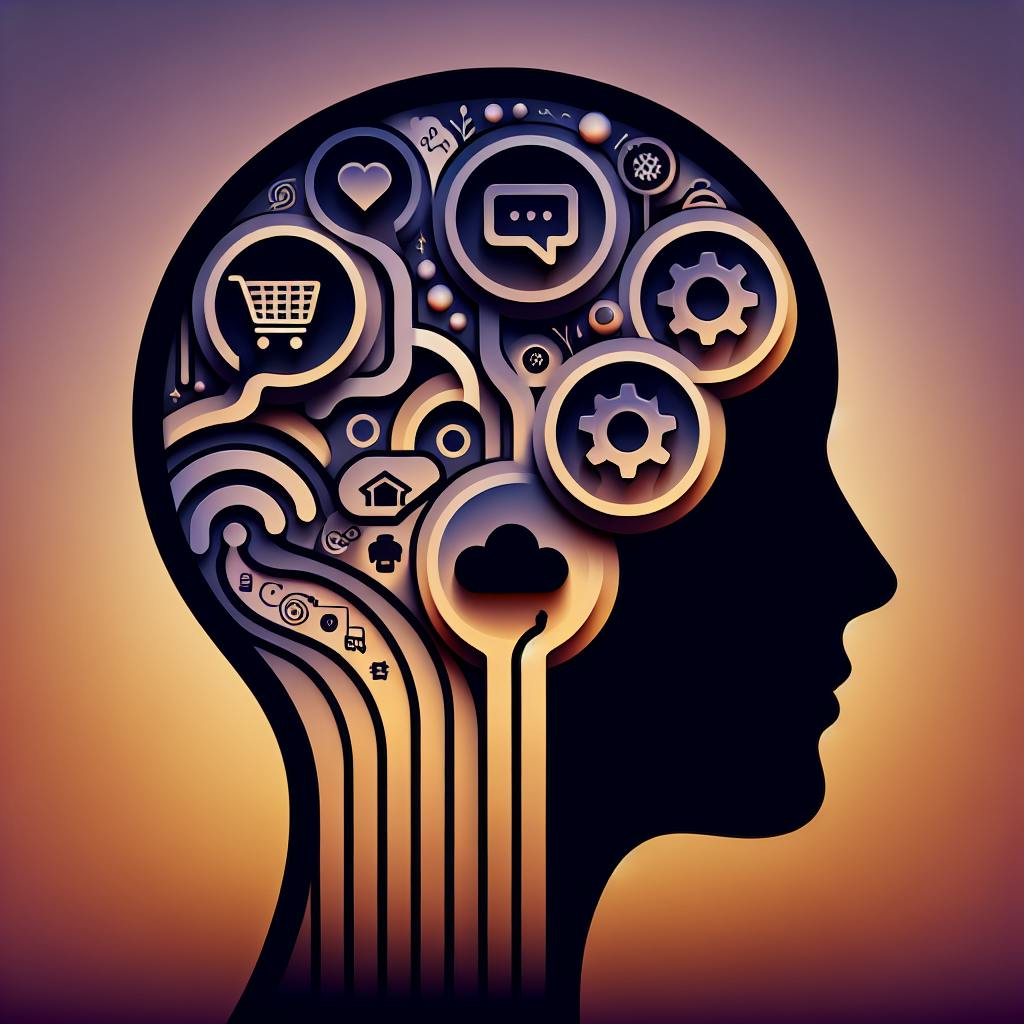Most likely everyone will agree with the statement:
It's REALLY hard to get started with AI development and leverage open source tools effectively.
Well, it turns out there's a whole galaxy of incredible Python open source libraries and projects for AI, machine learning, and natural language processing...
And they can supercharge your ChatGPT projects and propel your AI skills lightyears ahead.
In this post we'll explore the must-have Python open source tools for AI and ML, like TensorFlow and Hugging Face, and uncover a universe of open source AI projects on GitHub to accelerate your learning.
Unveiling Python AI Open Source Powerhouses
An introductory tour through the landscape of Python's open source AI ecosystem, highlighting essential tools for ChatGPT and their real-world applications.
Embarking on Your Python AI Journey
To build AI applications with Python, start by installing libraries like NumPy, Pandas, Matplotlib, and Scikit-Learn. These provide foundational data manipulation and machine learning capabilities.
For deep learning, install TensorFlow or PyTorch. Both offer flexibility for constructing neural networks. PyTorch features a define-by-run approach useful for rapid iteration, while TensorFlow provides deployment optimization.
When ready to apply models, utilize Hugging Face's model hub. It hosts open-source AI GPT models like GPT-2 for natural language generation. Finetune them on your data or use out-of-the-box for transfer learning.
Overall, Python's open-source AI ecosystem enables scalable projects. Leverage pre-built components to accelerate development.
TensorFlow: The Best AI ML Tool for Your Toolkit
TensorFlow leads in production-ready deep learning. Its eager execution simplifies model building, while the graph mode optimizes deployment.
For beginners, start with Keras. It provides user-friendly abstractions over TensorFlow. Later, utilize lower-level APIs for customization.
Pre-trained models within TensorFlow Hub transfer learn across tasks. Import them to bootstrap industry-grade applications.
With TensorFlow, construct neural networks for computer vision, NLP, reinforcement learning, and other cutting-edge AI capabilities to empower ChatGPT functionality.
Exploring PyTorch's Dynamic Neural Networks
PyTorch pioneered dynamic computational graphs for adaptability. Define layers and modify on-the-fly without slowing training.
Rapid experimentation enables PyTorch to support innovative research. But it also provides deployment functionality for productization.
PyTorch shines for CNN architectures. Use transfer learning from TorchVision or torchtext for text tasks. Explore PyTorch Lightning for organizing model code.
Build custom datasets and models with PyTorch's versatility. Then integrate seamlessly into ChatGPT for enhanced interfaces.
Navigating the Hugging Face Ecosystem for Open-Source AI GPT
Hugging Face provides thousands of NLP and computer vision models. Their model hub hosts open-source AI GPT tools like GPT-2 for text generation.
Fine-tune models on custom datasets or leverage without modification via inference APIs. Hugging Face integrates with PyTorch and TensorFlow for deployment.
Beyond established model families like BERT and GPT-3, Hugging Face supports community sharing. Upload your own models to catalyze open AI advancement.
Seamlessly Connecting AI Models with ChatGPT Interfaces
Once models are built, serve predictions through REST APIs. Options like FastAPI (Python), Flask, and Hugging Face Inference API simplify hosting.
For scalable deployments, use services like AWS SageMaker, Google Cloud AI, or Microsoft Azure. These provide optimized infrastructure for integration.
Connect API endpoints directly to ChatGPT dialogues to enrich conversations. Guide users to helpful responses powered by your models behind the scenes.
Is there a free open source AI?
To get started with open source AI projects, check out Vosk. Vosk is a speech recognition engine based on Kaldi that was developed by Johns Hopkins University and released as an open source project.
To use Vosk, you'll need to install some prerequisites like Kaldi, Python, and PyTorch. Once set up properly, you can integrate Vosk into your Python applications to add speech recognition capabilities. The accuracy is quite good for an open source offering and it supports many languages out of the box.
Overall, Vosk is a great example of a free, open source AI tool that enables developers to start building speech recognition into their apps and devices. The availability of the source code also means you can customize and extend Vosk to fit your specific use case. So if you're looking to experiment with AI and speech recognition, be sure to check out Vosk.
Can I build an AI with Python?
Python is an excellent language for building AI applications thanks to its extensive libraries and frameworks tailored for machine learning and neural networks. Some of the most popular open-source Python libraries for AI include:
- TensorFlow: Created by Google, TensorFlow is one of the most widely used open-source libraries for building neural network models and training them with data. It provides tools for developing complex deep learning models used in computer vision, NLP, and more.
- PyTorch: Developed by Facebook's AI research lab, PyTorch offers flexibility and speed for building neural networks. Many AI researchers prefer PyTorch for rapid prototyping and experimentation.
- Scikit-Learn: The go-to library for general machine learning in Python. Scikit-Learn provides algorithms and modeling tools for common tasks like classification, regression, clustering, dimensionality reduction and more. Great for beginners.
- Keras: As a high-level API for TensorFlow and other backends, Keras makes building and training neural networks much easier without sacrificing flexibility. Its simplicity has made it popular for fast prototyping.
With these mature Python libraries and the active open source community constantly pushing AI development further, programmers of any skill level can start building impressive AI applications. So if you're eager to create the next big AI chatbot like ChatGPT, Python is a solid starting point before considering proprietary solutions.
sbb-itb-b2c5cf4
Is GPT open source?
GPT-3 and ChatGPT are not open source. They were created by OpenAI and are proprietary models that require payment for access and usage. However, there are open source alternatives inspired by GPT-3 and fine-tuned versions for specific applications.
Some popular open source GPT models include:
- GPT-Neo: Created by EleutherAI with up to 2.7 billion parameters trained on the Pile dataset. There are multiple sizes to choose from based on your hardware capabilities.
- GPT-J: 6 billion parameters model by DeepMind based on GPT-3 architecture. Requires significant compute resources to run.
- Bloom: 570 million parameter model by HuggingFace trained on clean subsets of the Pile dataset. Easier to run compared to GPT-Neo and GPT-J.
Python libraries like TensorFlow and PyTorch make it easier to leverage these open source models for your AI/ML projects. With access to the model architectures and weights, you can fine-tune them for custom use cases relevant to your ChatGPT workflows.
Which Python library is used in AI?
NumPy
NumPy is one of the most commonly used Python libraries for AI and machine learning applications. With its powerful multidimensional array processing capabilities, NumPy enables efficient mathematical and statistical operations on arrays which serves as a key foundation for building machine learning models.
Some key reasons why NumPy is a popular choice for AI development:
- Allows vector and matrix manipulation which are essential for ML algorithms. Operations like dot product and matrix multiplication can be done easily.
- Provides optimized algorithms for numerical operations leading to faster computations. This improves performance of ML models.
- Seamless integration with other Python data science libraries like Pandas, SciPy, Matplotlib which are also used in AI.
- Open source library with a strong community support. Regular updates and fixes ensure stability.
So if you are starting out with AI or ML using Python, having a good grasp over NumPy is essential. The array processing functions and linear algebra capabilities offered by NumPy should be leveraged to build and train models faster. Resources like numpy tutorials on YouTube can help understand key concepts.
Exploring the GitHub Galaxy of Open Source AI Projects
A curated exploration of standout open source AI projects GitHub hosts, featuring codebases that inspire and instruct.
Diving Into NLP: Python AI Open Source GitHub Gems
GitHub contains a treasure trove of open source natural language processing (NLP) projects in Python, enabling everything from sentiment analysis to language translation. Some popular examples include spaCy for advanced NLP, TextBlob for basic text processing, and Gensim for topic modeling and word vector representations. These tools make it easy for developers to analyze, process, and interpret text data. When combined with ChatGPT conversational abilities, they allow users to build highly customized NLP chatbots and assistants.
Other great open source NLP projects on GitHub include SyntaxNet for syntactic parsing, OpenNMT for neural machine translation, and Stanford CoreNLP for text analysis. There are also exciting innovations in progress like Anthropic's Claude model focusing on harmless AI model iteration.
Visionaries in Computer Vision: Open Source Projects on GitHub
Computer vision utilizes specialized machine learning models to process, analyze, and understand visual information. There are many pioneering open source computer vision projects hosted on GitHub pushing boundaries in this space.
Some noteworthy examples include OpenCV for fundamental computer vision capabilities, Detectron2 for object detection, segmentation and 3D scene understanding, and Mediapipe offering cross-platform ML solutions for live and streaming media.
By combining these powerful computer vision techniques with ChatGPT, developers can create AI assistants capable of describing visual scenes, detecting objects, and even generating realistic media. Exciting innovations emerging from open computer vision initiatives indicate the vast possibilities ahead.
The Reinforcement Learning Arena: Top Open Source AI Projects
Reinforcement learning (RL) involves developing AI agents that interact with dynamic environments to achieve goals, much like how humans learn from experience. RL research has advanced rapidly thanks to various open source projects on GitHub.
Notable RL frameworks include TensorFlow Agents for scalable development, Ray RLlib delivering distributed reinforcement learning, and Coach simplifying experimentation. There are also libraries focusing on game environments like Gym Retro and ELF allowing agents to master complex video games.
As RL capabilities grow more advanced, integrating them with conversational agents like ChatGPT unlocks new possibilities in building AI assistants that dynamically improve through environmental interactions. The future looks bright for innovation emerging from open source RL.
The Art of Generative Modeling: Open Source Machine Learning Projects
Generative modeling focuses on algorithmically creating new samples, like generating synthetic images, video, text or audio that closely match real-world data samples. GitHub hosts various pioneering open source projects in this emerging space.
Some popular examples include GAN Lab for building Generative Adversarial Networks (GANs), StyleGAN exploring GANs for image generation, and GPT-2 showcasing advanced text generation techniques. Developers can leverage these tools to imbue ChatGPT and other conversational agents with superior generative abilities.
As innovations in generative modeling continue accelerating, open source projects enable enthusiasts to both contribute and learn from code at the frontier. The synergy between generative modeling and conversational AI promises a creative future.
Navigating the MLOps Universe: Projects and Practices
The MLOps philosophy promotes collaboration and communication between data scientists and IT professionals to streamline machine learning deployment and monitoring in production environments. There are various open source GitHub projects advancing best practices in MLOps space.
Examples include MLflow for managing the ML lifecycle, Seldon Core simplifying model deployment onto Kubernetes, and Evidently providing analytics for monitoring machine learning models. Following MLOps principles enables robust integration of AI like ChatGPT into business solutions.
With MLOps gaining widespread adoption, open source projects both instruct and propel techniques for smooth ML deployments. They showcase the tooling and mindsets catalyzing the practical application of AI chatbots to solve real-world problems.
Fostering Growth: Open Source Machine Learning Projects for Beginners
Open source machine learning projects provide a great opportunity for beginners to get hands-on experience and contribute to real-world AI development. Here are some tips on how beginners can find approachable projects, start making meaningful contributions, and strengthen the open source community along the way.
Scouting for Beginner-Friendly Open Source AI Projects
When first venturing into open source, it can be tricky to know where to start. Focus your search on popular GitHub repositories that specifically welcome new contributors and have clear contribution guidelines. Projects labeled "good first issue" or "help wanted" are ideal starting points. Before diving into coding, take time to understand the project goals, roadmap, and communication channels.
The Art of Documentation: Where to Begin in Open Source AI
Updating documentation is often an overlooked yet vital starting point for open source contributions. Even fixing typos and clarifying vague sections gives you familiarity with the codebase while benefiting other users. More advanced options include writing tutorials, improving API references, and adding more examples. Excellent documentation increases project accessibility.
Bug Busters: From Reporting to Resolving
Bug identification comes with experience, so don't worry if you can't spot many at first! When you notice unexpected behavior, carefully write up bug reports with specific steps to reproduce the issue and any relevant error messages. If you have coding skills, try fixing bugs yourself. Even incomplete pull requests demonstrating effort help move projects forward.
Creative Contributions: Enhancing Features in Open Source AI Tools
Ready to advance beyond bug fixes? Look for feature requests within project trackers that align with your skills and interests. Start small by refactoring existing code or adding minor improvements. As you become more integrated into the open source ecosystem, propose entirely new features with justification on how they would enrich the project.
Strengthening Community Ties: Support and Feedback in Open Source
Lastly, remember that open source revolves around collaborative communities. Be responsive on communication channels when other contributors have questions or feedback on your additions. Offer thoughtful peer reviews on incoming pull requests. And don't forget to show appreciation for maintainers through starring repositories or tweets of praise - positive reinforcement keeps projects thriving!


